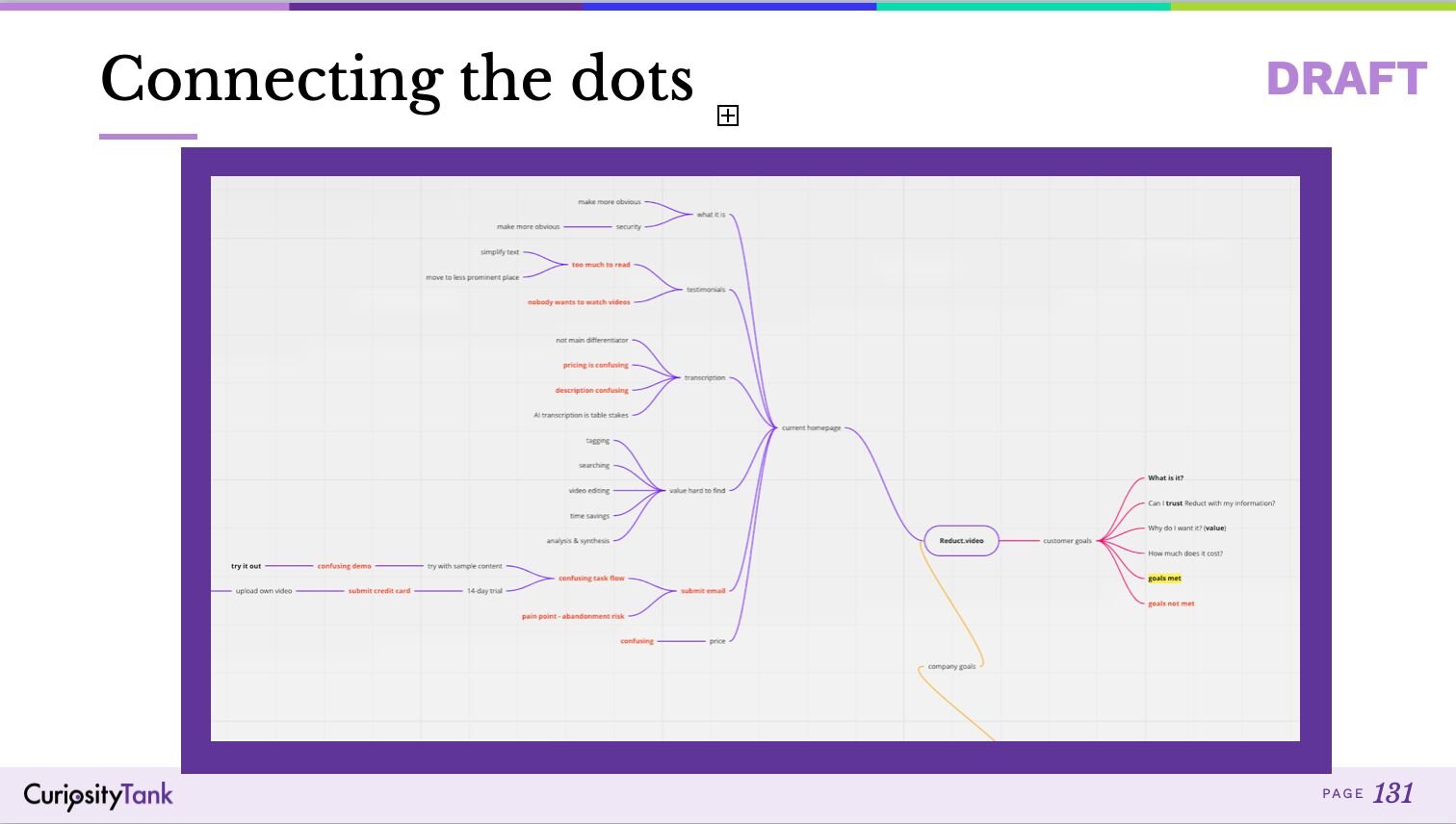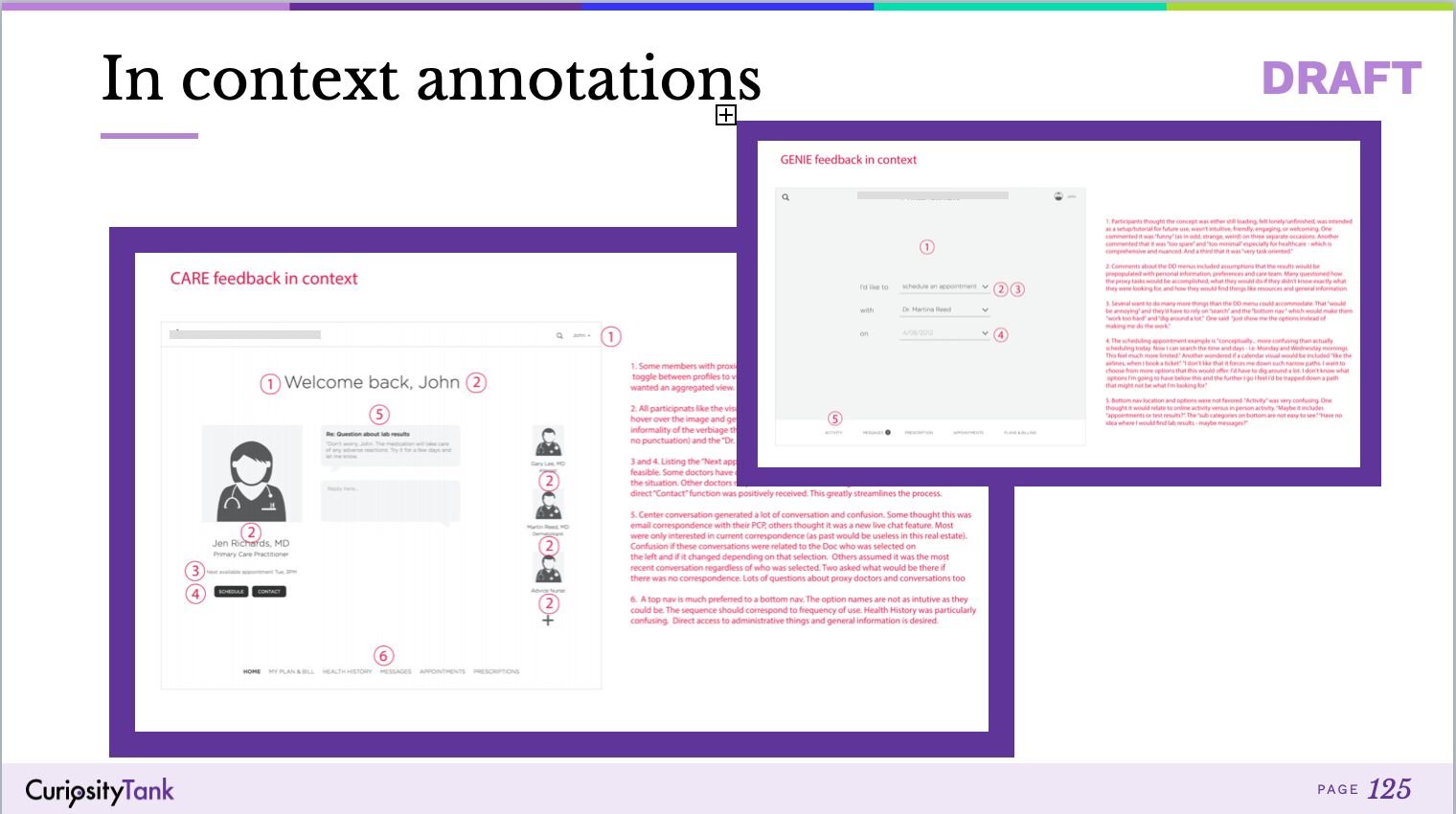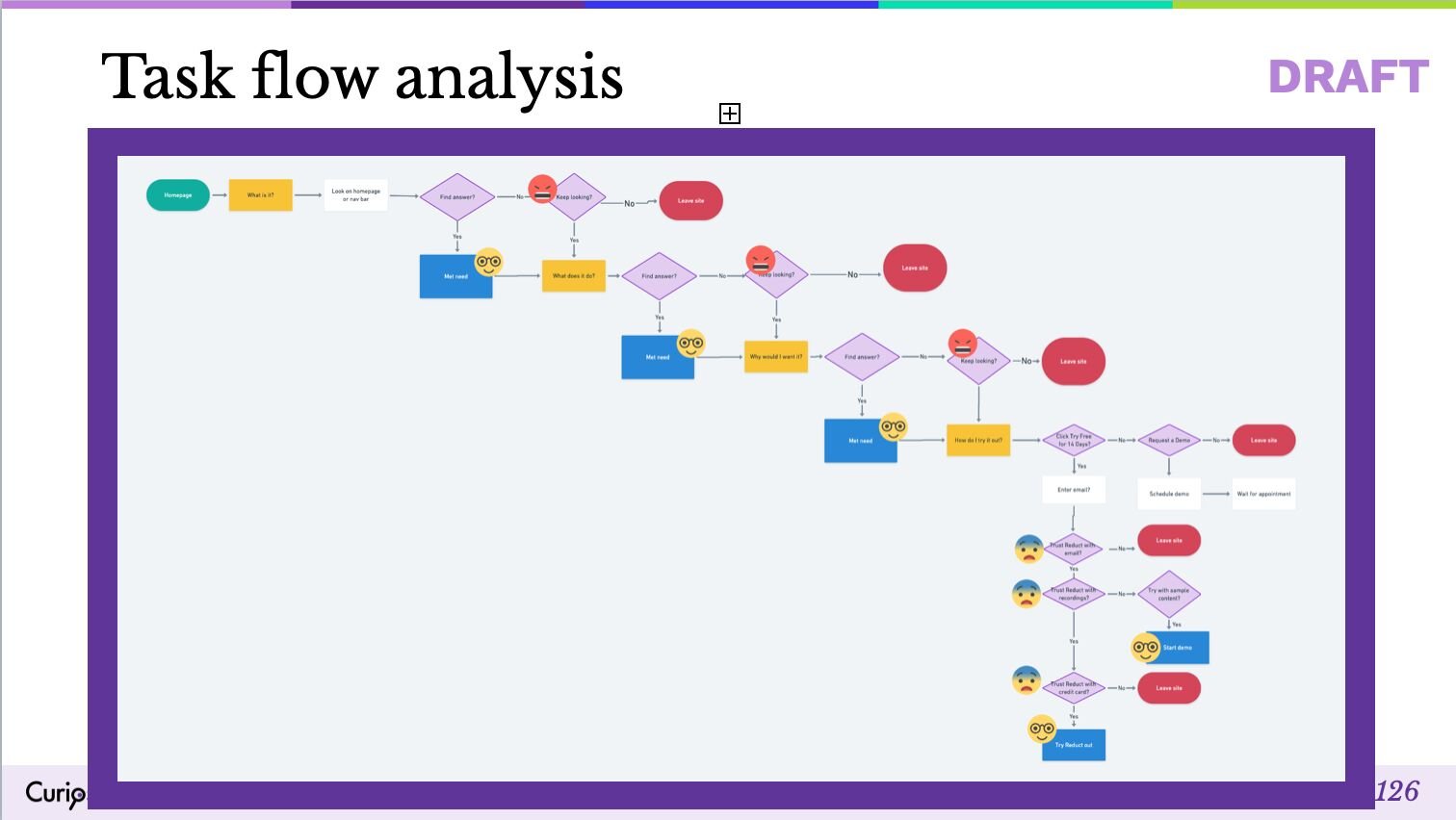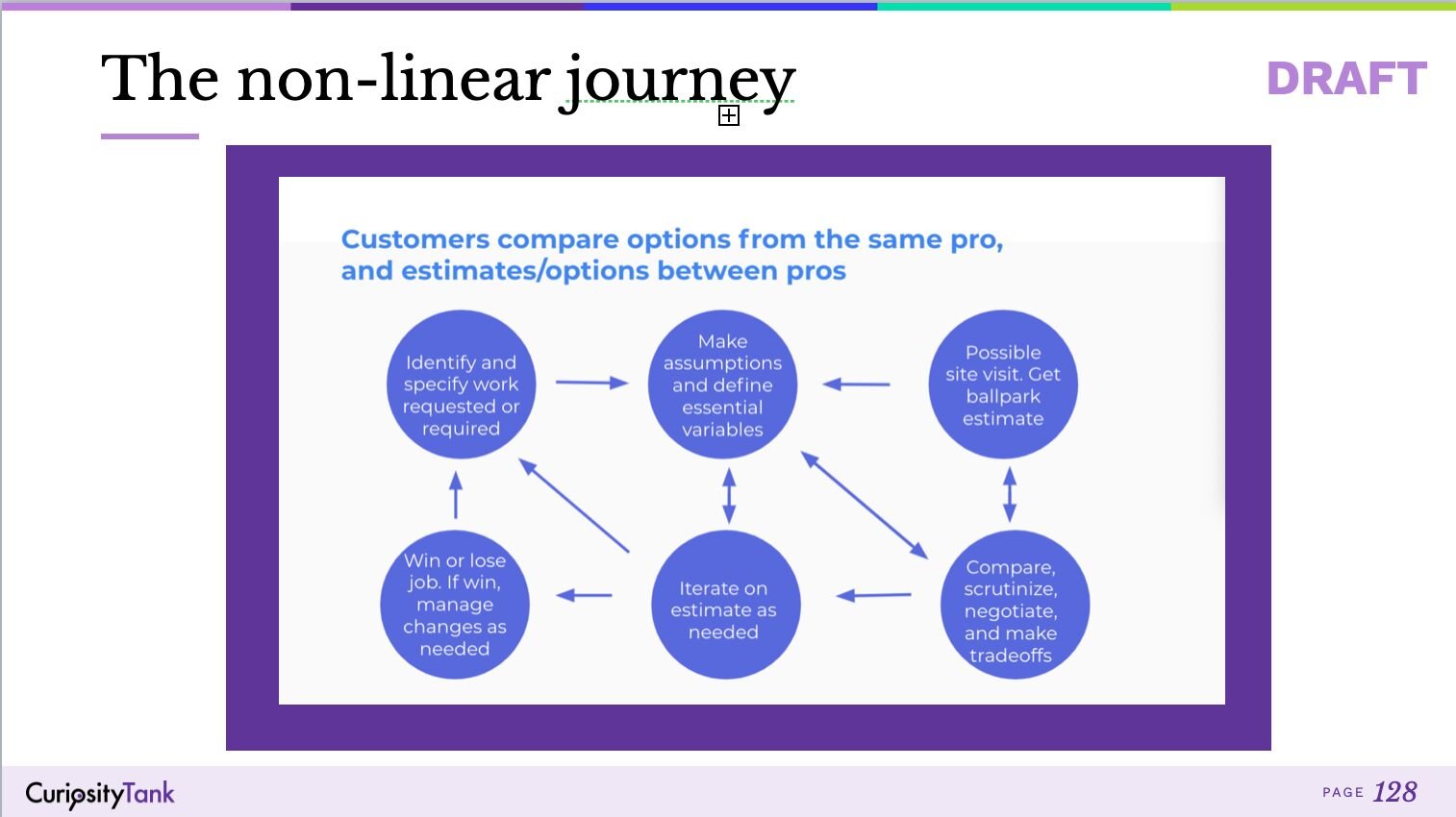Bringing the research to life
Let’s talk about using visuals when reporting on research learnings. Really bringing the research to life is one of my favorite parts about being a researcher!
By visuals, I mean icons, imagery, charts, graphs, word art, screenshots, artifacts, highlight reels, and other elements to convey the learnings. A combination of the above creates visual interest, builds credibility, assists the consumers of your research recalling the information and acting upon it.
Remember, our #1 goal is to get people to act on our learnings. So we want to make it as interesting, credible, and easy-to-digest as possible. Demonstrating our storytelling capabilities is key to bring the data to life, create the emotional connections, and speak to people in meaningful ways.
Some people prefer to digest information in analytical ways. Some love charts and graphs, video highlight reels, task flows, comparisons tables, etc. The visual approaches you use should be informed by the data and artifacts collected as well as the study's key takeaways.
The more we evolve technically and culturally, the more
important “story” is to how we consume information. Think about the advent of YouTube, Instagram and Facebook stories.
Think about how many people are now learning in more interactive formats. How many of you are watching and sharing your session's videos versus transcripts?
We’re a storytelling culture, and we’re becoming more so as we evolve and gather more data.
In our Ask Like A Pro Present workshop last week we spent a lot of time on how to present our learnings and how teams best recall the research learnings we share. We also focused on:
Narratives
If, when and how to use numbers in qualitative reporting
The importance of citing our sources when triangulating data
And organizing findings and action items according to functional team to make it easier to parse and act upon.
I’m always looking for ways to remove friction and help move my teams into action, faster.
Here are some examples from the Present workshop. I hope they help inspire you!






